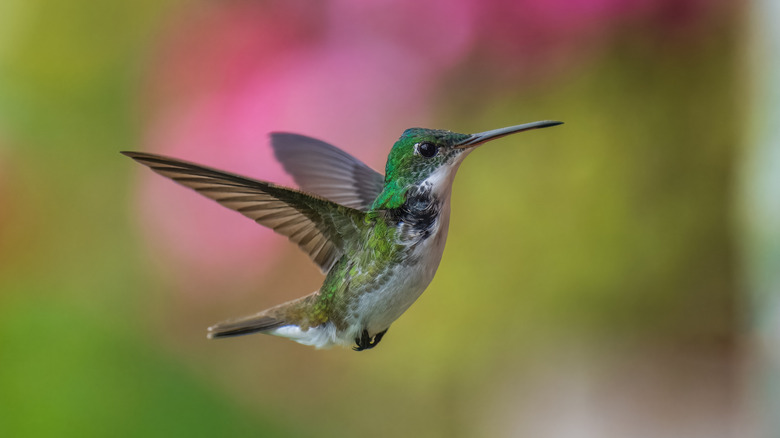The Spiky Purple Shrub That Will Lure More Beautiful Hummingbirds To Your Yard
Nothing is more enthralling than sitting and watching colorful hummingbirds zooming around your garden in search of delectable nectar that helps to fuel their busy flight. While many people add hummingbird feeders to their gardens to attract these delightful little birds, growing the right plants will also help to lure more beautiful hummingbirds to your backyard. One such plant is Cleveland sage (Salvia clevelandii). Although this pretty plant has small rounded teeth on the edges of its leaves, these leaves are actually quite soft and velvety to the touch. Tall flower spikes protrude from the center of the foliage in bursts of lavender or dark purple.
Hummingbirds are drawn to this salvia thanks to the sweet nectar within the flowers, so this is one plant you want to consider growing if you're keen to have more of the little hummers flitting around your garden. This attractive shrub can reach a height of up to 5 feet, and the flowers appear in late spring. It can be successfully grown in USDA hardiness zones 8 through 11, and to add to its allure, the leaves are lusciously scented. As a bonus, Cleveland sage requires minimal water, making it the perfect low-maintenance plant for a thriving flower garden.
How to grow Cleveland sage in your garden
Cleveland sage will prefer a sunny spot in your yard but can handle a little shade. It will happily grow in a wide variety of soils as long as they drain well. This salvia is fast-growing but mainly puts on growth spurts in the cooler seasons. The plant is also known to self-seed readily in the garden. This is great because salvias are among the best flowers that hummingbirds absolutely love, and the more you have, the more hummers are likely to pay you a visit.
Depending on the amount of rainfall you get in the summer, Cleveland sage may need to be watered only once a month and only when the soil is dry. However, once the plant has established itself after a year or so, you shouldn't have to water it all. If you deadhead the spent blooms, you'll encourage the plant to produce more flowers to keep those hummingbirds busy. But you'll find that it's not only hummers that will love this gorgeous plant – bees, butterflies, and other nectar-feeding birds will also be drawn to it.
You can prune your salvia shrub in the fall to keep it more compact and stop it from becoming too leggy. To add a little more contrast to your flower garden, you might even like to add vibrant orange flowers that hummingbirds also can't resist.

